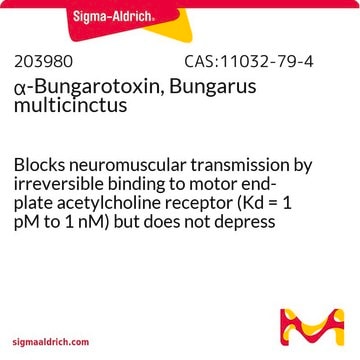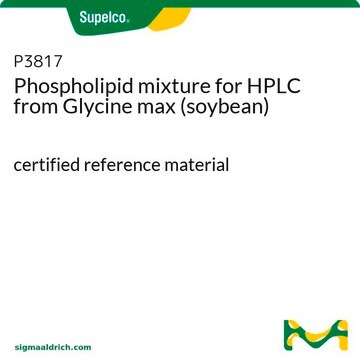M168
Methyllycaconitine citrate salt
from Delphinium brownii seeds, ≥96% (HPLC)
Synonym(s):
MLA, [1α,4(S),6β,14α,16β]-20-Ethyl-1,6,14,16-tetramethoxy-4-[[[2-(3-methyl-2,5-dioxo-1-pyrrolidinyl)benzoyl]oxy]methyl]aconitane-7,8-diol citrate salt
About This Item
Recommended Products
biological source
Delphinium brownii seeds
Assay
≥96% (HPLC)
color
white
solubility
H2O: 42 mg/mL
storage temp.
−20°C
SMILES string
O=C(OC[C@]12[C@@]([C@]3([C@H](CC1)OC)[C@@H]4N(C2)CC)([H])[C@@H]([C@]4(O)[C@]5(O)[C@]6([H])[C@@]3([H])C[C@@]([C@H](C5)OC)([H])[C@@H]6OC)OC)C7=CC=CC=C7N8C([C@@H](C)CC8=O)=O.OC(CC(CC(O)=O)(C(O)=O)O)=O
InChI
1S/C37H50N2O10.C6H8O7/c1-7-38-17-34(18-49-32(42)20-10-8-9-11-23(20)39-26(40)14-19(2)31(39)41)13-12-25(46-4)36-22-15-21-24(45-3)16-35(43,27(22)28(21)47-5)37(44,33(36)38)30(48-6)29(34)36;7-3(8)1-6(13,5(11)12)2-4(9)10/h8-11,19,21-22,24-25,27-30,33,43-44H,7,12-18H2,1-6H3;13H,1-2H2,(H,7,8)(H,9,10)(H,11,12)/t19-,21+,22+,24-,25-,27+,28-,29+,30-,33?,34-,35+,36-,37+;/m0./s1
InChI key
INBLZNJHDLEWPS-DDIMIZGISA-N
Application
- to study its effects on inflammatory response in rats post nicotine treatment
- to block the activity of galantamine
- to study its effects on the hepatic branch of the vagus nerve (hVNS) in rats
Biochem/physiol Actions
Features and Benefits
Storage Class Code
11 - Combustible Solids
WGK
WGK 3
Flash Point(F)
Not applicable
Flash Point(C)
Not applicable
Personal Protective Equipment
Certificates of Analysis (COA)
Search for Certificates of Analysis (COA) by entering the products Lot/Batch Number. Lot and Batch Numbers can be found on a product’s label following the words ‘Lot’ or ‘Batch’.
Already Own This Product?
Find documentation for the products that you have recently purchased in the Document Library.
Customers Also Viewed
Our team of scientists has experience in all areas of research including Life Science, Material Science, Chemical Synthesis, Chromatography, Analytical and many others.
Contact Technical Service













